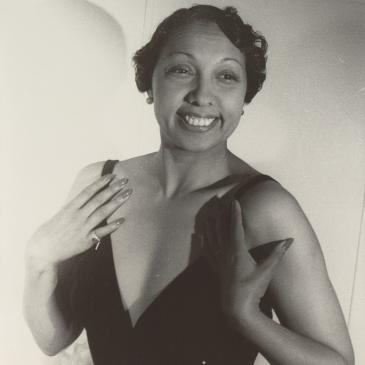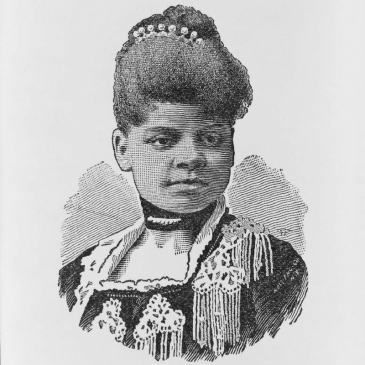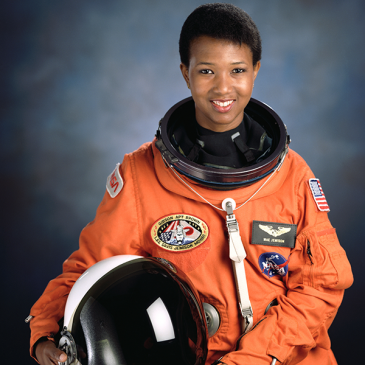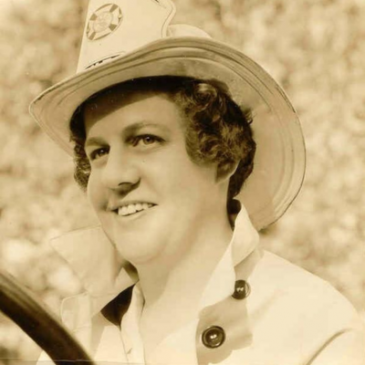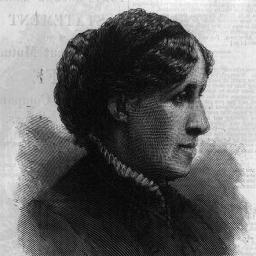Bessie Coleman
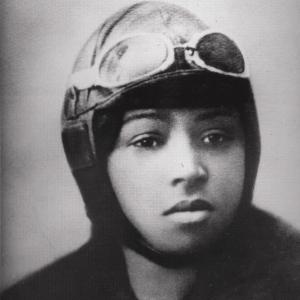
Bessie Coleman was born in Waxahachie, Texas in 1892. Her mother was of African ancestry and her father was of African and Native American ancestry.
Due to discrimination in the United States, however, she went to France to attend an aviation school to become a pilot. In 1921, she became the first American woman to obtain an international pilot’s license.
Coleman came back to the United States and became a stunt pilot. She also raised money to start a school to train African American aviators, hoping to afford them opportunities that were not then available in the U.S.
Coleman was killed in 1926 during an aerial show rehearsal. Her barrier-breaking life, determination, and impressive career accomplishments continue to provide inspiration for others to this day.
"Well, because I knew we had no aviators, neither men nor women, and I knew the Race needed to be represented along this racist important line, so I thought it my duty to risk my life to learn aviating and to encourage flying among men and women of the Race who are so far behind the white men in this special line, I made up my mind to try. I tried and was successful." – Bessie Coleman, Excerpt from "Aviatrix Must Sign Life Away to Learn Trade," Chicago Defender, October 8, 1921
Early Life in Waxahachie, Texas
Bessie Coleman was born in a one-room cabin on January 26, 1892. She was one of thirteen children. Her birth was neither recorded on a birth certificate nor in a family Bible. Her mother, Susan, and her father, George, could neither read nor write. It is not known whether Bessie’s parents, both Texas-born, were enslaved before the Civil War. Susan’s family was originally from Georgia and had migrated to Texas before her birth. George's family had significant Native American roots. Three of his grandparents were Native - most likely Choctaw or Cherokee. His father was from Indian Territory and his mother from Missouri (Rich 3).
Coleman was born within the Jim Crow era, a time when a racial caste system operated across the country between 1877 and 1965 in backlash against Emancipation and the abolition of slavery. Local and state governments, especially in the South, disenfranchised African Americans through legal means, and racist mobs violently threatened the lives. Housing and public places were legally or socially segregated by race.
Even while facing the violence and barriers created by Jim Crow segregation, George Coleman bought a small plot of land in Waxahachie, Texas, thirty miles south of Dallas. Bessie Coleman’s early childhood was a happy one, spent playing on the front lawn edged by red and yellow roses and attending church on Sundays. In 1898 Coleman started school. Two years before, the US Supreme Court had established the legality of the “separate but equal” doctrine in schools with the Plessy v Ferguson decision. The racially segregated school she attended was a one-room wooden building that held students in grades one through eight, with only one teacher for all. Coleman walked four miles from her home to school where she was taught reading, writing and arithmetic, often without textbooks or enough paper and pencils. Intelligent, uninhibited, and eager to learn, she quickly established herself as the star student in math (Rich 7).
In 1901, Coleman’s life changed when her father left the family. It’s possible his decision could have been influenced by the hundreds of lynchings in the South and violence specifically in Texas. George was of both Black and Native ancestry. Hatred and violence towards Natives were also part of Texas history. However, in Oklahoma, George’s Native ancestry could offer him an escape from the violence created by his double bind in Texas. In Indian Territory, he could enjoy the full rights of a citizen.
At the age of 45, Susan Coleman became a single mother at a time when most Black households were expected to be led by men. She became a cook and housekeeper for a white couple. Susan ensured the education of her children through a traveling library where Bessie Coleman learned about important people and accomplishments in Black history such as Harriet Tubman (Rich 9). Among those Coleman read to her sisters at bedtime was “Uncle Tom’s Cabin.” Written by an abolitionist, it was popular among progressive whites, but less so among Blacks because it depicted docile enslaved Black people. “I’ll never be a Topsy or an Uncle Tom,” Bessie said after closing the cover. Years later, Bessie announced her ambition “to make Uncle Tom’s cabin into a hangar for a flying school.” (Grossman)
Every year, Bessie’s school schedule was upset by the cotton harvest. Cotton drove many decisions, causing school to shut down as soon as cotton picking began, and Bessie worked in the fields. After completing school, she worked as a laundress, collecting, washing, and delivering laundry. All the while, she dreamed of escaping Waxahachie for better opportunities.
She did briefly, when she attended Langston Industrial College in Oklahoma, but could only afford one semester, so she dropped out and moved to Chicago. By 1919, she was living with two brothers who had also moved to Chicago. A Both of her brothers had also served in the military in France as members of the 370th Regiment of the Illinois National Guard.
The Great Migration to Chicago
When Coleman moved to Chicago, she began looking for a job. Most African American women who worked outside the home were domestic workers, although a few became schoolteachers. It wasn’t until the first World War that factories would employ Black women. With limited opportunities, Coleman decided to become a beautician and enrolled in the Burnham School of Beauty Culture to become a manicurist.
She soon became one of the most popular manicurists in Black Chicago. She sat at a window table where her mostly male customers could be seen being groomed by “a beautiful woman” (Rich, 20). While in Chicago, she also became an avid reader of the African American-led Chicago Defender newspaper.
After five years in Chicago, Bessie learned a trade, married, found her own place to live, had seen her brothers go to war, and survived a race riot. Although Coleman and her family survived the riot, it left 38 people dead, 537 injured and left over 1,000 people homeless. Even in the North, Coleman found her life at risk and opportunities limited because of her race and gender. At the age of 27, after her brother John described women flying airplanes in France while he was there during the war, she decided the air would be the arena for her ambitions (Rich 27). She applied to almost every American flying school but was rejected because of her race and gender. The doors to the open skies of America were closed to Coleman, but France appeared to be a different story.
Colman sought the advice of Robert S. Abbott, the editor and publisher of the Chicago Weekly Defender. On his advice, Coleman learned French, took a better paying job and began applying to French aviation schools.
On to France
On November 9, 1920, Coleman was issued an American passport and went to the French consulate for a tourist’s visa of one year. Then on November 20th, she sailed for France from New York City. Upon her arrival, she selected France’s most famous flight school - the Ecole d’Aviation des Frères Caudron at Le Crotoy in the Somme where she completed a ten-month course “including tail spins, banking and looping the loop.” (Rich 32). At this time, airplanes were fragile, and flying was hazardous. During her training, she witnessed the danger of her new profession when an accident killed a student pilot. After seven months of training, and two weeks after the Tulsa Race Riot, she took the qualifying test for a license from the renowned Federation Aeronautique Internationale (FAI), the only organization at the time whose recognition granted one the right to fly anywhere in the world. She was the first American of any race or gender to be directly awarded these credentials.
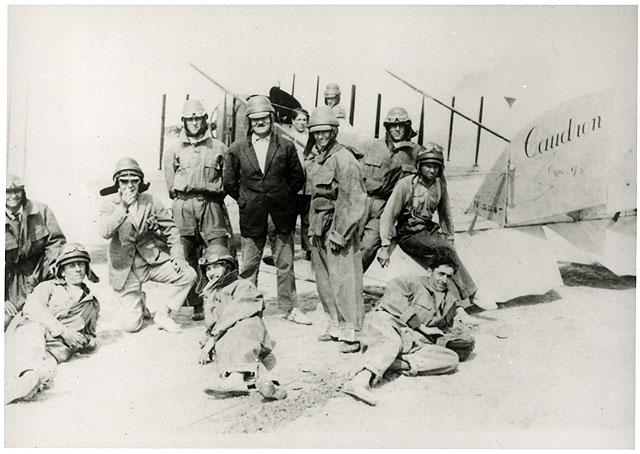
Flying Across the U.S.
Coleman returned to New York in September of 1921 and was greeted by reporters from several national African American newspapers. She also received a silver loving cup from the cast of the Broadway hit, Shuffle Along in honor of her achievement. The musical launched the careers of Josephine Baker and Paul Robeson. The cup was a gesture not only of respect and admiration, but also of compassion and recognition of the odds she and other African Americans had to face.
Coleman traveled across the country performing in air shows as a stunt pilot. She gave speeches and showed films of her air shows in theaters and schools to raise funds for the cause. Audiences were fascinated by her performances of “loop the loops” and figure 8’s in the sky. She toured Europe as well as the US, performing shows and giving lessons while encouraging African Americans to learn aviation. Coleman’s ultimate dream was to own a plane and create a flight school for African Americans.
Coleman returned to Chicago in 1922 as the triumphant “Queen Bess, Daredevil Aviatrix”. Her Chicago debut brought over 2,000 spectators of all different backgrounds.
Coleman even signed a contract to star in a full-length feature film. However, she quit and walked off of the movie set. After realizing the film portrayed African Americans in a racist and derogatory way while wearing ragged clothing, Colman stated, “No Uncle Tom stuff for me”. She refused to reinforce white stereotypes to further reduce the self-esteem of her own people by acting out on screen the role of an ignorant Southern Black woman (Rich 60). She was supported by the Black press as a role model for promoting Black equality.
When Coleman walked off the New York movie set, she was without a contract, a sponsor, or a plane. She kept traveling to raise money for an airplane and purchased a Jenny - JN -4 with an OX-5 engine. She arranged an airshow in California to celebrate the opening of a new fairground. However, moments after she took off from Santa Monica for the Los Angeles fairgrounds, her motor stalled at 300 feet. Her newly purchased plane nose-dived, smashing into the ground. She survived the crash but was badly injured with a broken leg, a few cracked ribs, and cuts on her face.
Battered and bandaged but unwilling to feel defeated, Coleman sent the following telegram from her hospital bed to her friends, “TELL THEM ALL THAT AS SOON AS I CAN WALK I’M GOING TO FLY! AND MY FAITH IN AVIATION AND THE USEFUL OF IT WILL SERVE IN FULFILLING THE DESTINY OF MY PEOPLE ISN’T SHAKEN AT ALL.” (Rich 70)
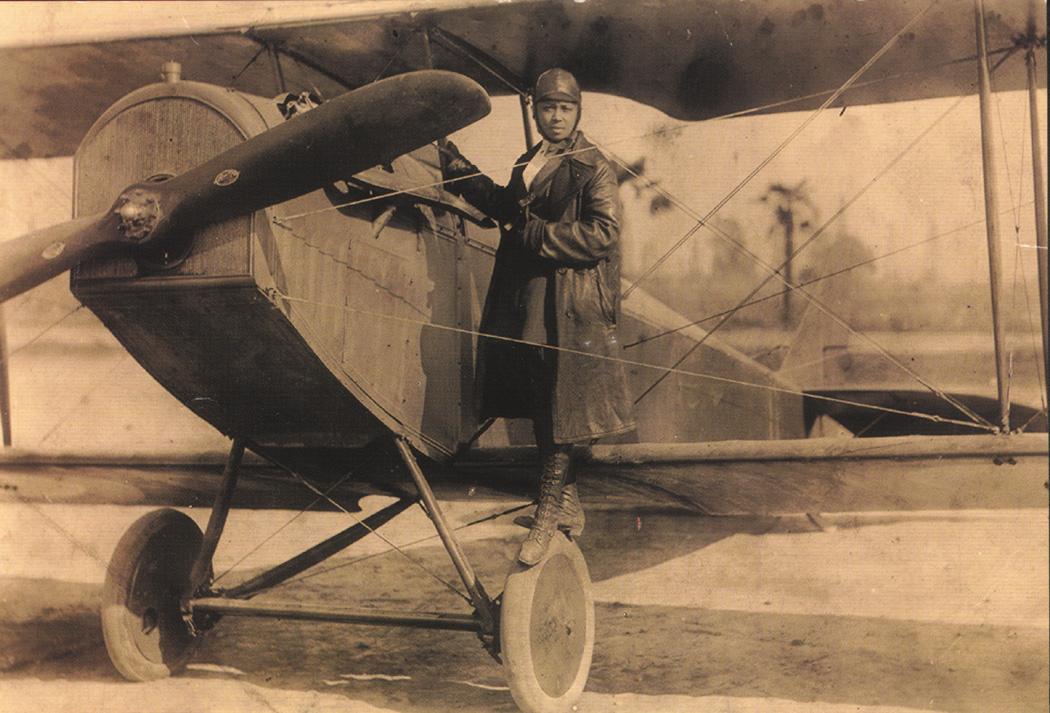
Triumph in Texas
Coleman healed from her injuries and after returning to Chicago, lined up a series of lectures and exhibition flights in Texas. Borrowing a plane, she made her first flight since the accident in Houston, Texas on June 19th. This was on the holiday of Juneteenth, the anniversary of the day enslaved African Americans in Texas were emancipated. The Coleman not only showed her audience dives with barrel rolls, figure eights and loop the loops, but also displayed the courage and determination that everyone can aspire to. The show’s success led to even more appearances and lectures.
At one such performance in Wharton, Texas, Coleman even performed a jump. The original parachute jumper had taken ill. In order to fulfill the show, Coleman contacted another pilot and strapped a parachute to her harness. At 3,000 feet she climbed out of the cockpit, walked out on the wing’s catwalk to the edge, jumped out, and landed in the center of the crowd to thunderous applause.
At another show, Coleman stood up for civil rights while performing in her hometown of Waxahachie. The show was to be performed before a mixed though segregated audience, with African American people in one area and white people in another, with separate admission gates for each race. “But Bessie drew the line at the two gates. There would be one entrance only, she said, or she would not perform. The organizers finally agreed as long as the audience was segregated after they came in … Bessie had to give in. She needed the money from the show and the passenger rides that would follow so she could purchase a new airplane” (Rich 95).
Promoting Her Craft
After her success in Texas, Coleman moved home to Chicago for three months trying to arrange lectures, shows, and even tried to promote her own film. She wrote to film studios to try and have her flight reels shown in movie theaters.
The following letter has been transcribed from Rich, Doris L. 1993. Queen Bess: Daredevil Aviator. Smithsonian Institution Press.
Tampa, Florida.
Feb. 3 1926
Norman Studios
Arlington, Florida
Dear Sirs: -
I was given your address by Mr. Trumbull, owner of the Liberty Theater in St. Petersburg after I appeared there in person and on the screen with 2 reels showing my flights in Europe and America I have my life work that I want put into pictures I know I have been a success in every house I have played in Chicago and other cities. And with only 2 reel as an added attraction I have titled my play Yesterday - Today & Tomorrow.
If you are enerested which I am sure a few remarks from Mr. Trumbull will give you the correct idea what I will mean to you. And as any intelligent person knows what I am the world’s first Co Flyer. Man or woman. We have one man now a pilot 9 months in Tulsa if you are interested I will be willing to go father into the matter with you. I am, and know it, the Most Known Colored person (woman alive) (other than the Jazz singers)
Write me what you would like to do about this matter.
Bessie Coleman
℅ 1313 Mairon Street
Tampa, Fla.
Although the film never materialized, she lectured throughout Georgia and Florida and eventually moved to Florida. Coleman was booked for a parachute jump at the annual flower show in Orlando but threatened to withdraw when she found out that the show would be for white people only. Coleman, yet again, bravely stood up against white supremacy.
This was a dangerous stand to take as racial segregation at the time was vigorously enforced in Florida. For example, African Americans had to carry a special pass to be out after dark in Daytona Beach. In Tampa, white supremacists threatened and frightened Black property owners into selling and leaving the city. Coleman’s threat to withdraw from the show worked and the Chamber of Commerce allowed African Americans to attend the show. Coleman also opened a beauty parlor in Orlando to finance the purchase of a new plane, a used Jenny two-seater.
Untimely Death and Legacy
In April of 1926, Bessie Coleman prepared for a show at Jacksonville’s Field Day on May 1st. On April 28th, a24 year old white mechanic, William D. Wills, flew Coleman’s new plane from Dallas to Jacksonville. On April 30th, Coleman and Wills took a test flight. While Wills was in the front cockpit taking over the controls, Coleman sat in the rear so she could study the field for good jump sites. She was unable to fasten her seat belt since looking down on the field required peering over the edge of the back seat cockpit, and Bessie was too short to do so while fully seated (Rich 110). At about 3,000 feet in the air, a loose wrench got stuck in the engine of the aircraft and the plane flipped over. Coleman fell out of the plane and did not survive the fall. The aircraft also crashed with Wills still on board, killing him as well.
Bessie Coleman’s death shocked and saddened friends and fans across the country. At her funeral in Chicago, there were thousands in attendance and twenty-two pallbearers. Among them were Congressman Oscar DePriest and attorney Earl B. Dickerson, who had won a major case before the US Supreme Court about racial housing segregation. Ida B. Wells-Barnett, a passionate author and speaker for equal rights, was mistress of ceremonies for the funeral. Viola Hill delivered a eulogy, speaking proudly of Bessie’s refusal to perform any place where African Americans were not permitted (Rich 114).
Baptist pastor Junius C. Austin delivered the funeral oration, saying of Bessie, “This girl was one hundred years ahead of the Race she loved so well, and by whom she was least appreciated.” An African American newspaper in Dallas remarked upon her death that “there is reason to believe that the general public did not completely sense the size of her contribution to the achievements of the race as such.” Another paper reminded its readers, “Whether they take to it or not, Miss Coleman has taught our women that they can navigate the air, and like all pioneers, she has built her own monument.” (Rich 119)
Although she died at the age of 34, her legacy continues to inspire. In 1931, the Challenger Pilots Association, a group of pioneering Black aviators, flew over Lincoln Cemetery at Kedzie Avenue and 123rd Street and dropped flowers on Bessie’s grave. Until they were too old to fly, the members regularly repeated the gesture. Each year, bright-colored blooms floated in the air where, like Bessie said, there is no prejudice (Grossman). Later in 1995, the “Bessie Coleman Stamp” was made to commemorate all of her accomplishments. And then in 2023, the US Mint released a Bessie Coleman quarter as part of the American Women Quarters Program.
Mae Jemison, who in 1992 became the first African American woman to go into space, wrote that she “wished I had known her while I was growing up, but then again I think she was there with me all the time.” In one way Coleman was indeed with her when she left Earth. Jemison carried a picture of Coleman with her into space, flying far higher than Coleman ever dreamed. Coleman’s intelligence, strength and determination continues to inspire younger generations of African American women. (Slotnik)
 Primary Source Analysis Strategies
Primary Source Analysis Strategies
Bessie Coleman in France (Photograph)
Caption: General view of a group of flight students at the Ecole d’Aviation des Freres Caudron at Le Crotoy, France, standing beside a Caudron Type G3. Bessie Coleman is shown sitting on the rear elevator.
Educator Notes:
Educators can build on the thinking routine See Think Wonder to build inquiry using this photograph. Use the questions below to prompt further exploration.
Analysis Questions:
- Take a close look at this image. What do you notice about the people in the image?
- What do you think Bessie Coleman’s experience was like while at the flight school?
Caption: Bessie Coleman, the first African American licensed pilot, shown here on the wheel of a Curtiss JN-4 “Jennie” in her custom designed flying suit (circa 1924).
Educator Notes:
Educators can use the Library of Congress Teaching with Primary Sources Teacher Guide: Analyzing Photographs to build inquiry about this photograph.
Bessie Coleman’s Letter to Norman Studios
Tampa, Florida.
Feb. 3 1926
Norman Studios
Arlington, Florida
Dear Sirs: -
I was given your address by Mr. Trumbull, owner of the Liberty Theater in St. Petersburg after I appeared there in person and on the screen with 2 reels showing my flights in Europe and America I have my life work that I want put into pictures I know I have been a success in every house I have played in Chicago and other cities. And with only 2 reel as an added attraction I have titled my play Yesterday - Today & Tomorrow.
If you are enerested which I am sure a few remarks from Mr. Trumbull will give you the correct idea what I will mean to you. And as any intelligent person knows what I am the world’s first Co Flyer. Man or woman. We have one man now a pilot 9 months in Tulsa if you are interested I will be willing to go father into the matter with you. I am, and know it, the Most Known Colored person (woman alive) (other than the Jazz singers)
Write me what you would like to do about this matter.
Bessie Coleman
℅ 1313 Mairon Street
Tampa, Fla.
Credit: Rich, Doris L. 1993. Queen Bess: Daredevil Aviator. Smithsonian Institution Press.
Educator Notes:
Educators can use the Library of Congress Teaching with Primary Sources Teacher Guide: Analyzing Primary Sources to build inquiry around this letter. Learners can further explore using the detailed questions below.
Analysis Questions:
- How would you describe Coleman’s ambition after reading this letter?
- Research the historical context of Tampa in the 1920s. Why would this be a good location for Coleman to work and try to publicize her film?
- Why do you think Coleman chose the name of her play “Yesterday - Today and Tomorrow” after reading her biography. How could this title apply to US history at large?
- Bessie Coleman was determined to share her story with the world. What are some stories that you want to share with others? How can you use your voice to make a difference?
Caption: The Bessie Coleman stamp was issued on April 27, 1995.
Educator Notes:
Educators can use the Library of Congress Teaching with Primary Sources Teacher Guide: Analyzing Primary Sources to build inquiry around this letter. Learners can further explore using the detailed questions below.
Analysis Questions:
- The Bessie Coleman stamp was issued on April 27th, 1995. After learning more about African American history during that the time period, why do you believe that stamp was issued in 1995?
- Based on your reading of Coleman’s biography, why was she chosen as the face of this commemorative stamp?
Video: American Masters: Aviator Bessie Coleman
Educator Notes:
Educators can help students explore the differences between primary and secondary sources, like this video, using the Library of Congress Primary Secondary Source Sort activity adapted for learner use. Learners can think more on the video using the questions below.
Analysis Questions:
- What was the "Great Migration" and how did it impact Bessie Coleman's life?
- How did Bessie Coleman's experience in France differ from her experience in the United States? What does this tell us about the importance of cultural context in shaping opportunities?
- Explain the many obstacles that Bessie Coleman faced. How did she overcome these obstacles?
- How did Bessie Coleman use her fame as a pilot to fight racism?
- Bessie Coleman was an activist who used her fame to fight against racism. What are some ways you can use your voice and actions to make a positive impact on the world?
-
Grossman, Ron. “That road O’Hare is on? It’s named for Bessie Coleman, who 100 years ago became the first Black woman pilot in America.” The Chicago Tribune. November 24, 2021. https://www.chicagotribune.com/2021/11/24/that-road-ohare-is-on-its-named-for-bessie-coleman-who-100-years-ago-became-the-first-black-woman-pilot-in-america/.
-
Rich, Doris L. 1993. Queen Bess: Daredevil Aviator. Smithsonian Institution Press.
-
Slotnik, Daniel. “Overlooked No More: Bessie Coleman, Pioneering African American Aviatrix” New York Times. Dec. 11, 2019. https://www.nytimes.com/2019/12/11/obituaries/bessie-coleman-overlooked.html
APA: Mathias, M. (2024). Bessie Coleman. Retrieved from https://www.womenshistory.org/education-resources/biographies/bessie-coleman
Chicago: Mathias, Marisa. "Bessie Coleman." National Women's History Museum. 2024. https://www.womenshistory.org/education-resources/biographies/bessie-coleman.
MLA: Mathias, Marisa. "Bessie Coleman." National Women's History Museum. https://www.womenshistory.org/education-resources/biographies/bessie-coleman. Date accessed.
- Borden, Louise, Mary Kay. Kroeger, and Teresa Flavin. Fly High!: The Story of Bessie Coleman. Dubuque, IA: Kendall/Hall, 2008.
- Kaplan, Betty, Miriam Sawyer, and Caroline M. Fannin. Distinguished African Americans in Aviation and Space Science. Oryx Press, 2002.
- UNLADYLIKE2020, Unladylike Productions, LLC. “Bessie Coleman.” Accessed on December 21, 2022. https://unladylike2020.com/profile/bessie-coleman/
- National Air and Space Museum. “Bessie Coleman.” Accessed on December 21, 2022. https://airandspace.si.edu/explore/stories/bessie-coleman
- Smithsonian Learning Lab - Athletes and Aviators: Women Who Shaped History
- Smithsonian Learning Lab - Let Women Fly: Female Aviators and Astronauts
- https://tpsteachersnetwork.org/album/84626-bessie-coleman-americas-first-black-female-aviatrix
- Learn more about professional black female pilots who are committed to supporting future black aviators through mentorship, professional development, outreach and scholarship through Sisters of the Skies: https://sistersoftheskies.org/
Classroom Posters:
Mae Jemison

This biography is sponsored in part by the Library of Congress Teaching with Primary Sources Eastern Region Program, coordinated by Waynesburg University. Content created and featured in partnership with the TPS program does not indicate an endorsement by the Library of Congress.
For further information or questions, please contact [email protected].

This biography is sponsored in part by the Library of Congress Teaching with Primary Sources Eastern Region Program, coordinated by Waynesburg University. Content created and featured in partnership with the TPS program does not indicate an endorsement by the Library of Congress.
For further information or questions, please contact [email protected].

